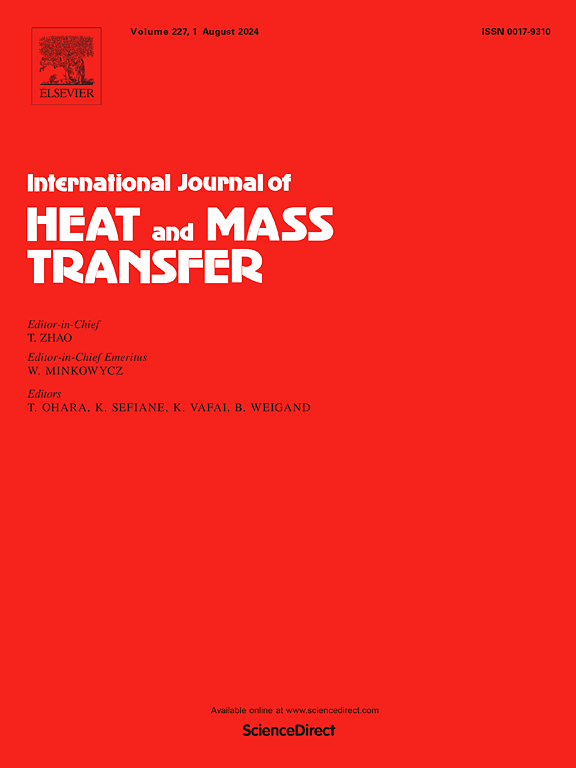Influence of the Biot number on error in measuring enthalpy using the T-history method
IF 5
2区 工程技术
Q1 ENGINEERING, MECHANICAL
International Journal of Heat and Mass Transfer
Pub Date : 2025-07-04
DOI:10.1016/j.ijheatmasstransfer.2025.127492
引用次数: 0
Abstract
The T-history method measures the enthalpy and the phase transition temperatures in bulk scale samples. Despite its widespread use in characterizing phase change materials (PCMs), a systematic investigation of errors in T-history measurements is still lacking. While a lumped capacitance is often assumed in the data analysis, actual experimental conditions may not justify such use. To help identify when such analysis can be significantly erroneous, this paper investigates the quantitative relationship between the Biot number (Bi) and error using both experiments and computational modeling. We use two different sample tubes in combination with convection conditions to vary Bi. At Bi<0.1, T-history shows excellent agreement with Differential Scanning Calorimetry (DSC) measurements. As Bi approaches 1, the error increases progressively due to the development of a vertical non-uniformity in temperature. At low Bi, the thermal time constant of the sample can still introduce significant uncertainty in data analysis that is often overlooked. Finally, the analysis is also sensitive to the specific heat of the reference material. By identifying experimental conditions that properly justify the use of the T-history data analysis, this work helps improve the overall accuracy and reliability of the method most commonly used in characterizing PCMs.
Biot数对t -历史法测量焓值误差的影响
t -历史法测量了样品的焓和相变温度。尽管其广泛应用于表征相变材料(PCMs),系统的调查误差在t历史测量仍然缺乏。虽然集总电容通常在数据分析中假设,但实际实验条件可能不证明这种使用是合理的。为了帮助确定这种分析何时可能会出现严重错误,本文使用实验和计算模型研究了Biot数(Bi)与误差之间的定量关系。我们使用两种不同的样管结合对流条件来改变Bi。在Bi<;0.1时,T-history与差示扫描量热法(DSC)测量结果非常吻合。当Bi接近1时,由于温度的垂直不均匀性的发展,误差逐渐增加。在低Bi时,样品的热时间常数仍然可以在数据分析中引入经常被忽视的重大不确定性。最后,分析对参考物质的比热也很敏感。通过确定适当证明使用t -历史数据分析的实验条件,这项工作有助于提高表征PCMs最常用方法的整体准确性和可靠性。
本文章由计算机程序翻译,如有差异,请以英文原文为准。
求助全文
约1分钟内获得全文
求助全文
来源期刊
CiteScore
10.30
自引率
13.50%
发文量
1319
审稿时长
41 days
期刊介绍:
International Journal of Heat and Mass Transfer is the vehicle for the exchange of basic ideas in heat and mass transfer between research workers and engineers throughout the world. It focuses on both analytical and experimental research, with an emphasis on contributions which increase the basic understanding of transfer processes and their application to engineering problems.
Topics include:
-New methods of measuring and/or correlating transport-property data
-Energy engineering
-Environmental applications of heat and/or mass transfer

 求助内容:
求助内容: 应助结果提醒方式:
应助结果提醒方式:


